Sustainable Drain Management Project
Sustainable Drain Management in Selwyn-Waihora – healthy waterways within productive land
Key messages and advice for anyone thinking of undertaking a riparian restoration project are included in three short videos.
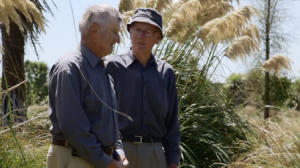 Restoring Harts Creek – view the video here
Restoring Harts Creek – view the video here
Hear the story of the fantastic restoration work carried out over the last 15 years from the people involved. Peter Chamberlain and Colin Patterson farm on the banks of Harts Creek and talk about the work that has been carried out.
Thanks to WWF and Environment Canterbury for their help in making this video.
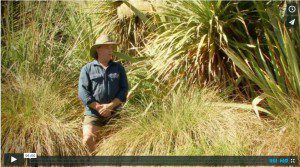 Planning for planting – view the video here.
Planning for planting – view the video here.
This short video covers some of the things to consider before you get started on your planting project.
Thanks to Selwyn District Council and Environment Canterbury for their help in making this video, and SFF and CEF for funding assistance.
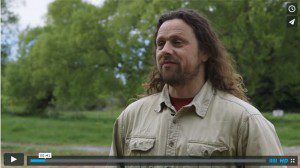 Planting native plants – view the video here.
Planting native plants – view the video here.
This very practical video covers site preparation, planting and installing plant protection, and the maintenance required in the first few years.
Thanks to WWF and Environment Canterbury for their help in making this video.
Also on this page:
Planning is a vital part of any project and considering a few key points and getting advice about the best plants and how to plant them can save you time and money, and help to ensure your project succeeds.
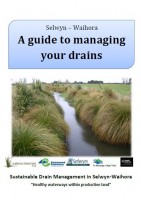 “A guide to managing your drains” brings together information on the best ways to manage your drains.. You can download a copy here.
“A guide to managing your drains” brings together information on the best ways to manage your drains.. You can download a copy here.
Further advice and information is also available from:
- Environment Canterbury (ECan) ph 353 9007 or 0800 EC INFO (0800 324 6360800 324 636 ) or visit www.ecan.govt.nz – working together to maintain our drains
- Selwyn District Council (SDC) ph 347 2800 or visit www.selwyn.govt.nz – land drainage information
Both councils have information about managing drains and about recommended plants. Information from ECan’s Living Streams programme offers practical tips from people who are experienced in stream restorations. There are three parts to this program – note these documents are over ten years old put still offer a good deal of information.
Living Streams Handbook Part 1: Investigating and planning
Living Streams Handbook Part 2: Improving the stream environment
Living Streams Handbook Park 3: Planting and maintenance
Environment Canterbury offer biodiversity funding through their Immediate Steps program.
SDC has produced a planting guide and also has a simple form to be completed before undertaking planting on a classified drain. SDC have a Natural Environment Fund to encourage and assist landowners with voluntary work that benefits the natural environment and to support the continued identification and protection of on-farm biodiversity.
Lucas Associates have a guide to riparian planting and management – Caring for Streams of the Canterbury Plains
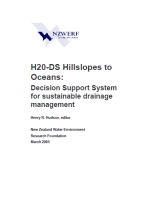 In 2005 NZWERF, the New Zealand Water Environment Research Foundation, published a decision support system for sustainable drainage management called H2O: Hillslopes to Ocean edited by Dr Henry R Hudson. Much of this information is very relevant for the Selwyn Waihora catchment. A shorter Field Guide is also available.
In 2005 NZWERF, the New Zealand Water Environment Research Foundation, published a decision support system for sustainable drainage management called H2O: Hillslopes to Ocean edited by Dr Henry R Hudson. Much of this information is very relevant for the Selwyn Waihora catchment. A shorter Field Guide is also available.
A series of ‘Best Management Practice’ factsheets were also developed and, as they are not available elsewhere, the full set is available here:
Bank Reshaping
Brown Trout
Channel Excavation
Coarse Sediment Trap
Filter Strip
Grassed Waterway
Inanga
Interceptor Bunds
Livestock
Reed Grass
Rehabilitation
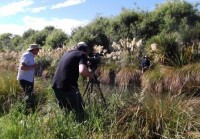 Videos – Two short videos, with the first one completed in mid-2013 and the second in early 2014.
Videos – Two short videos, with the first one completed in mid-2013 and the second in early 2014.
Summer student – in 2012/13 we had a Lincoln student looking at the wide range of costs and benefits associated with drain restoration. This research contributed to our Guide to Managing Drains booklet.
Restoration plans – between July 2011 and June 2013 WET provided riparian restoration plans free of charge to 20 landowners in the Selwyn-Waihora catchment.
Halswell bus trip – In December 2012, in conjunction with Whakaora Te Waihora, WET hosted over 60 people for a bus trip of the upper Halswell Catchment. We heard from engineers, restoration experts and local farmers and saw some great examples of drains being managed for multiple values.
 Demonstration Site leaflet – WET and the Sustainable Drain Management team have put together a simple guide to some of the more recently planted riparian restoration sites around the catchment.
Demonstration Site leaflet – WET and the Sustainable Drain Management team have put together a simple guide to some of the more recently planted riparian restoration sites around the catchment.
The guide features 12 sites planted between 2008 and 2011, plus suggestions of a few more established sites that can be visited.
If you’d like to see how our waterways can be transformed, these sites are well worth a visit.
Celebrating Success – in June 2012, together with the Harts Creek Streamcare Group, the SDM team hosted a field trip to celebrate the restoration work carried out over the last 10 years on Harts Creek and Birdlings Brook. It was great to hear from the farmers about what had inspired them to to plant with natives. Despite the damp weather we were able to see first-hand what can be achieved and to hear about the difference it has made to the water quality and local biodiversity. Colin Patterson also shared his poetry with the group. We finished with lunch and a chance for everyone to ask questions and gather information.
Sustainable Drain Management Project (SDM)
The Sustainable Drain Management Project brought together a team from WET, Environment Canterbury, Selwyn District Council, Ngai Tahu, Lincoln University, and the local community to develop a shared understanding of the drainage network. As well as the current management practices, the scale and nature of issues associated with drains, and potential solutions developing and delivering consistent messages and advice across the catchment.
Outcomes were identified:
- Maintaining or enhancing the drainage function.
- Improving water quality – with a focus on phosphate/sediment transfer rather than nitrates. Some of the water entering the drainage network from groundwater is quite high in nitrates, but denitrification requires suitable residence time with an appropriate energy source. This is more likely to occur in a wetland situation rather than with flowing water in drains. Therefore the focus was more on management to reduce the phosphate/sediment loads.
- Improving in-stream health and biodiversity, particularly by providing increased shading to reduce water temperature, and improving terrestrial biodiversity with appropriate indigenous species planted along drains and waterways.
- Improved aesthetics is also an important outcome which is particularly important for some. Many people really like the look of native planting and it demonstrates concern for the environment to the wider community. Some studies suggest it can even increase property values!
Field days, presentations, displays and information sheets provided relevant information for the catchment. WET worked with a small group of farmers to provide riparian restoration plans for their properties. These plans addressed site specific issues such as fencing and planting low spots and gullies to provide a buffer to trap surface water runoff and sediment. Demonstration sites have been installed in various locations. These show the successful restoration system developed over recent years, enabling planting to be installed in a cost effective and efficient way and with very high survival rates.
Thanks to everyone who is contributing time and energy to this project, and to our funders – the Ministry for the Environment’s Community Environment Fund, the Ministry of Agriculture’s Sustainable Farming Fund, and Canterbury Community Trust. Thanks also to ECan and SDC for funding in addition to their in-kind contributions.
